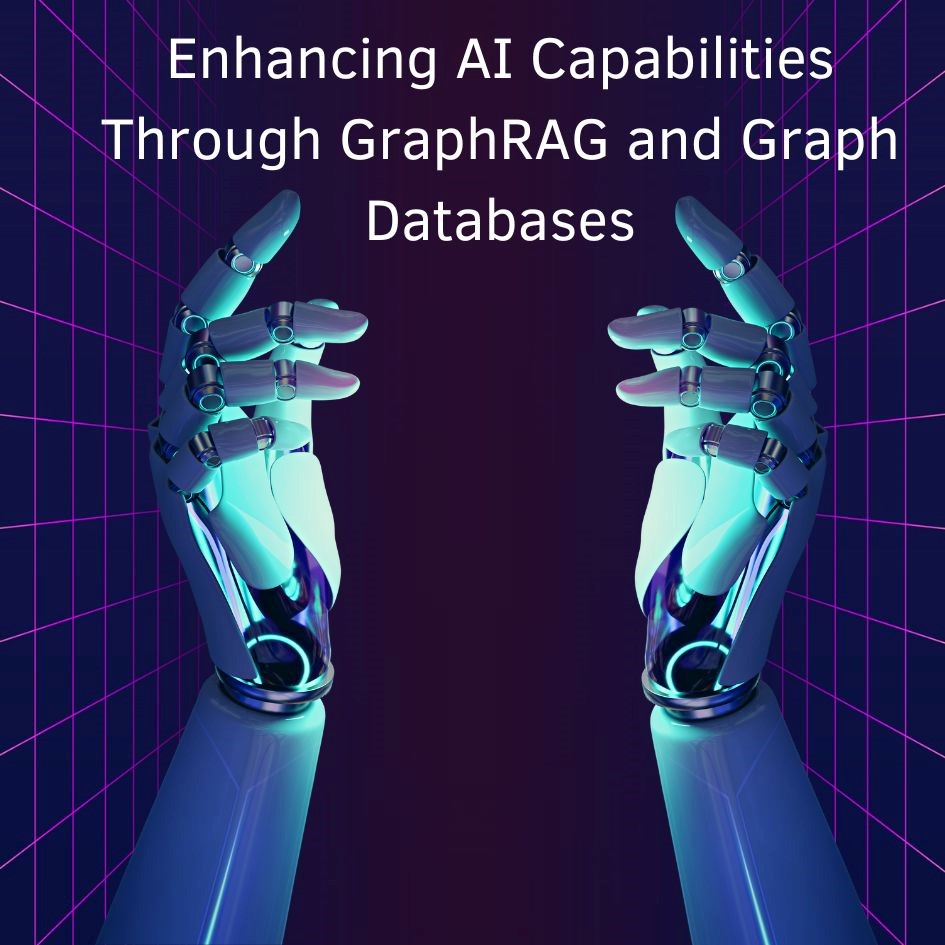Enhancing AI Capabilities Through GraphRAG and Graph Databases
In the fast-evolving realm of artificial intelligence, the integration of graph databases with innovative techniques like GraphRAG is paving the way for improved knowledge retrieval and decision-making. Ravi Kiran Magham examines how these advancements transform the processing of complex data, highlighting their significance across various applications in AI.
The Emergence of GraphRAG
The rapid advancement of AI, especially in natural language processing (NLP), requires effective management of interconnected data. Traditional models, while powerful, often struggle with knowledge-intensive tasks that need structured datasets. GraphRAG bridges this gap by integrating retrieval-augmented generation (RAG) with graph databases, enhancing the reasoning capabilities of large language models (LLMs). This approach uses a structured representation of knowledge for efficient querying and retrieval. By establishing a graph-based index that captures intricate relationships between entities, GraphRAG lays a robust foundation for improved context awareness in AI responses.
Key Components of GraphRAG
- The architecture of GraphRAG is composed of several interconnected stages designed to enhance interactions between large language models (LLMs) and graph-structured knowledge.
- Graph-Based Indexing: The process begins by constructing a knowledge graph from diverse data sources, ensuring efficient data retrieval. This stage involves cleaning and normalizing the graph data to uphold accuracy and consistency.
- Graph-Guided Retrieval: Intelligent mechanisms analyze user queries to pinpoint the most relevant information within the graph. By employing advanced retrieval paradigms, GraphRAG ensures users receive contextually relevant answers.
- Graph-Enhanced Generation: The retrieved graph data is converted into formats suitable for LLMs, improving the generation of informative responses. Techniques are employed to refine the input to the LLM, enhancing the quality of outputs.
- Training and Optimization: Both retrieval and generation components undergo rigorous training and optimization to maximize performance and align the system with specific tasks.
- Evaluation and Monitoring: Continuous evaluation and monitoring are crucial for ensuring the effectiveness of GraphRAG systems, utilizing task-specific metrics to assess output accuracy and quality, while also detecting anomalies and data drift.
Benefits of GraphRAG
GraphRAG offers significant advantages over traditional RAG systems, particularly for knowledge-intensive tasks. By leveraging graph databases, it enhances the accuracy and contextual relevance of responses while effectively managing complex, interconnected information. This is especially useful for applications requiring multi-hop reasoning. Additionally, GraphRAG reduces token usage, lowering computational costs and speeding up response times, with dynamic integration of new information ensuring the knowledge graph remains current without complete reindexing.
The Role of Graph Databases in AI Advancement
Graph databases are essential for enhancing GraphRAG functionalities. They provide an optimized structure for storing and querying interconnected data, allowing efficient traversal of relationships between entities. Unlike traditional relational databases, graph databases excel at handling complex queries while maintaining performance as data volumes increase. Key features such as native graph storage, index-free adjacency, and flexible schema management are crucial for processing complex relationships in AI applications requiring real-time data analysis and quick decision-making.
Overcoming Challenges in Implementation
Despite the benefits of GraphRAG and graph databases, organizations encounter challenges during implementation. Data security and privacy issues arise from processing substantial volumes of sensitive information in real time, making regulatory compliance and data protection crucial for maintaining user trust. Scalability also becomes critical as the number of interconnected devices increases. Organizations must ensure their systems can manage growing data volumes without compromising performance, while achieving interoperability among various IoT devices and protocols is essential for seamless communication and data exchange.
Future Trends and Directions
The future of GraphRAG and graph databases appears bright, with emerging trends enhancing their capabilities. Deeper integration with AI and machine learning will support sophisticated analytics and automated decision-making. The adoption of 5G networks will boost streaming technology responsiveness for real-time processing. Furthermore, advancements in edge computing will facilitate complex analytics closer to data sources, reducing latency and improving efficiency. Additionally, the evolution of digital twin technologies will enable more accurate modeling of physical systems, providing valuable real-time insights into operations.
In conclusion, Ravi Kiran Magham highlights the transformative role of GraphRAG and graph databases in enhancing artificial intelligence capabilities. These technologies improve the processing of interconnected information, enabling AI to deliver accurate, contextually relevant responses. Their integration will open new avenues for decision-making and operational efficiency across various sectors.

